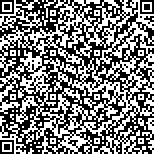| 引用本文: |
符佳, 张伟, 周赛男, 徐寅, 朱莹.苦参芩黛汤灌肠对溃疡性结肠炎大鼠Cajal间质细胞自噬的影响[J].湖南中医药大学学报,2025,45(11):2026-2034[点击复制] |
|
| |
|
|
| 本文已被:浏览 2次 下载 3次 |
| 苦参芩黛汤灌肠对溃疡性结肠炎大鼠Cajal间质细胞自噬的影响 |
| 符佳,张伟,周赛男,徐寅,朱莹 |
| (湖南中医药大学第一附属医院, 湖南 长沙 410007) |
| 摘要: |
| 目的 探讨苦参芩黛汤灌肠对溃疡性结肠炎(UC)大鼠结肠Cajal间质细胞(ICC)自噬的影响及其作用机制。方法 将40只SPF级雄性SD大鼠随机分为空白对照组(10只)和实验组(30只)。实验组采用5%2,4,6-三硝基苯磺酸(TNBS)(100 mg/kg)联合50%乙醇灌肠构建急性UC模型,造模成功后随机分为模型组、苦参芩黛汤组、美沙拉嗪组,每组10只。空白对照组和模型组给予等体积生理盐水灌肠,苦参芩黛汤组以10.28 g/(kg·d)生药量灌肠,美沙拉嗪组以0.41 g/(kg·d)灌肠,每天1次,连续干预14 d。记录各组大鼠体质量及疾病活动指数(DAI);观察结肠宏观损伤并计算结肠黏膜损伤指数(CMDI);HE染色评估结肠组织病理变化;ELISA检测血清白细胞介素(IL)-6、肿瘤坏死因子-α(TNF-α)、IL-1β、IL-10水平;免疫荧光检测结肠组织c-kit与自噬相关蛋白Beclin-1共定位情况;Western blot检测结肠组织微管相关蛋白1轻链3(LC3)-Ⅱ/LC3-Ⅰ比值及Beclin-1、p62蛋白表达;透射电镜观察ICC超微结构及自噬小体数量。结果 与空白对照组比较,模型组大鼠体质量降低(P<0.01),DAI及CMDI评分升高(P<0.01);大鼠肠绒毛显著受损且伴有肿胀,固有层及黏膜下层有大量中性粒细胞浸润,水肿明显,黏膜层、黏膜下层结构紊乱;血清IL-6、TNF-α、IL-1β水平升高(P<0.01),IL-10水平降低(P<0.01);结肠组织c-kit与Beclin-1共表达比例、LC3-Ⅱ/LC3-Ⅰ比值及Beclin-1蛋白表达上调(P<0.01),p62蛋白表达下调(P<0.01);ICC内自噬小体数量增多,细胞器损伤明显。与模型组比较,苦参芩黛汤组和美沙拉嗪组大鼠体质量增加(P<0.01),DAI、CMDI评分降低(P<0.05,P<0.01);大鼠肠绒毛损伤均有改善,黏膜下层和固有层中性粒细胞浸润减少,水肿减轻,黏膜层、黏膜下层结构清晰度提高;血清IL-6、TNF-α、IL-1β水平降低(P<0.01),IL-10水平升高(P<0.01);结肠组织c-kit与Beclin-1共表达比例、LC3-Ⅱ/LC3-Ⅰ比值及Beclin-1蛋白表达下调(P<0.01),p62蛋白表达上调(P<0.01);ICC内自噬小体数量减少,细胞器损伤减轻。与苦参芩黛汤组比较,美沙拉嗪组大鼠体质量增加(P<0.01),DAI、CMDI评分降低(P<0.05,P<0.01);大鼠肠绒毛损伤均有改善,黏膜下层和固有层中性粒细胞浸润减少,水肿减轻,黏膜层、黏膜下层结构清晰度提高;血清IL-6、TNF-α、IL-1β水平降低(P<0.01),IL-10水平升高(P<0.01);结肠组织c-kit与Beclin-1共表达比例、LC3-Ⅱ/LC3-Ⅰ比值及Beclin-1蛋白表达下调(P<0.01),p62蛋白表达上调(P<0.01);ICC内细胞器损伤减轻。结论 苦参芩黛汤灌肠可有效改善UC大鼠肠道炎症,其机制可能与抑制ICC过度自噬、调节自噬相关蛋白表达有关。 |
| 关键词: 溃疡性结肠炎 苦参芩黛汤 灌肠 Cajal间质细胞 自噬 |
| DOI:10.3969/j.issn.1674-070X.2025.11.002 |
| 投稿时间:2025-08-07 |
| 基金项目:国家自然科学基金项目(82374426,81874466); 全国名老中医药专家传承工作室建设项目(国中医药人教函[2022]75号); 湖南中医药大学中医学国内一流建设学科项目;湖南中医药大学校院联合基金项目(2023XYLH032); 湖南省中医药科研课题(B2023079); 国家中医药管理局中医治疗优势病种(临床循证能力提升)项目(czxm-kyb-2025001)。 |
|
| Effects of Kushen Qindai Decoction enema on autophagy of interstitial cells of Cajal in rats with ulcerative colitis |
| FU Jia, ZHANG Wei, ZHOU Sainan, XU Yin, ZHU Ying |
| (The First Hospital of Hunan University of Chinese Medicine, Changsha, Hunan 410007, China) |
| Abstract: |
| Objective To investigate the effects of Kushen Qindai Decoction(KSQDD) enema on autophagy of colonic interstitial cells of Cajal(ICC) in rats with ulcerative colitis(UC) and its mechanism of action. Methods Forty SPF-grade male SD rats were randomly divided into blank control group(n=10) and experimental group(n=30). The experimental group received enema administration of 5% 2,4,6-trinitrobenzene sulfonic acid(TNBS)(100 mg/kg) combined with 50% ethanol to establish an acute UC model. After successful modeling, the experimental group was randomly subdivided into model group, KSQDD group and mesalazine group, with ten rats in each group. The blank control and model groups received enema with an equal volume of normal saline. The KSQDD group received KSQDD enema at a dose of 10.28 g/(kg·d)(crude drug concentration), while the mesalazine group received 0.41 g/(kg·d) enema, once daily for 14 consecutive days. Body weight and disease activity index(DAI) of rats in each group were recorded. Colonic macroscopic damage was observed and colonic mucosal damage index(CMDI) was calculated. Histopathological changes in the colon were assessed by Hematoxylin-eosin(HE) staining. Serum levels of interleukin-6(IL-6), tumor necrosis factor-α(TNF-α), IL-1β, and IL-10 were determined by Enzyme-linked immunosorbent assay(ELISA). Immunofluorescence was used to check the co-localization of c-kit and the autophagy-related protein Beclin-1 in colonic tissue. Western blot was used to measure the microtubule-associated protein 1 light chain 3(LC3)-Ⅱ/LC3-Ⅰ ratio and the protein expressions of Beclin-1 and p62 in colonic tissue. Transmission electron microscopy(TEM) was used to observe the ultrastructure of ICC and the number of autophagosomes. Results Compared with the blank control group, the model group showed reduced body weight(P<0.01), elevated DAI and CMDI scores(P<0.01), significant damage and swelling of the intestinal villi, massive infiltration of neutrophils in the lamina propria and submucosa, obvious edema, and disordered structure of the mucosal layer and submucosa. Serum levels of IL-6, TNF-α, and IL-1β increased(P<0.01), while IL-10 level decreased(P<0.01). The co-expression ratio of c-kit and Beclin-1, the LC3-Ⅱ/LC3-Ⅰ ratio, and Beclin-1 protein expression in colonic tissue were up-regulated, while p62 protein expression was down-regulated(P<0.01). The number of autophagosomes in ICC increased, with obvious organelle damage. Compared with the model group, both the KSQDD and mesalazine groups showed increased body weight(P<0.01), decreased DAI and CMDI scores(P<0.05 or P<0.01), improved intestinal villi damage,reduced neutrophil infiltration in the submucosa and lamina propria, alleviated edema, and improved structural clarity of the mucosal layer and submucosa. Serum levels of IL-6, TNF-α, and IL-1β decreased(P<0.01), while IL-10 level increased(P<0.01). The co-expression ratio of c-kit and Beclin-1, the LC3-Ⅱ/LC3-Ⅰ ratio, and Beclin-1 protein expression in colonic tissue were down-regulated(P<0.01), while p62 protein expression was up-regulated(P<0.01). The number of autophagosomes in ICC decreased, and organelle damage was alleviated. Compared with the KSQDD group, the mesalazine group demonstrated increased body weight(P<0.01), decreased DAI and CMDI scores(P<0.05, P<0.01), improved intestinal villi damage, reduced neutrophil infiltration in the submucosa and lamina propria, alleviated edema, and improved structural clarity of the mucosal layer and submucosa. Serum levels of IL-6, TNF-α, and IL-1β decreased(P<0.01), while IL-10 level increased(P<0.01). The coexpression ratio of c-kit/Beclin-1, the LC3-II/LC3-I ratio, and Beclin-1 protein expression in colonic tissue were down-regulated(P<0.01), while p62 protein expression was up-regulated(P<0.01). Organelle damage in ICC was reduced. Conclusion KSQDD enema can effectively alleviate intestinal inflammation in UC rats, and its mechanism may be related to inhibiting excessive autophagy of ICC and regulating the expression of autophagy-related proteins. |
| Key words: ulcerative colitis Kushen Qindai Decoction enema interstitial cells of Cajal autophagy |
|

二维码(扫一下试试看!) |
|
|
|
|




